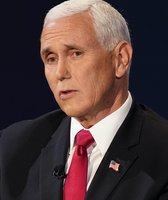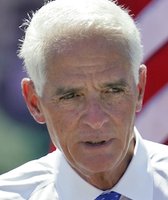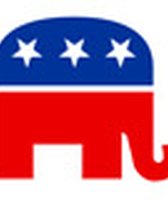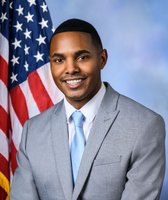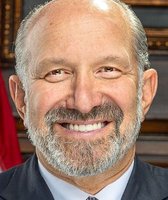Stand up for the facts!
Our only agenda is to publish the truth so you can be an informed participant in democracy.
We need your help.
I would like to contribute
SUMMARY: So how many people don't pay taxes? We answer that question and more.
In an interview with Fox News, John McCain was asked about Barack Obama's claim that 95 percent of Americans will not see their taxes go up under Obama's proposals.
"You spent a lot of time in your debate dealing with that. Is that honest? Is that truthful?" commentator Sean Hannity asked in an Oct. 12, 2008, interview.
"Well, first of all, it's not truthful in the respect that 50 percent or 40 percent of the American people — of taxpayers — American citizens don't pay taxes, federal income taxes," McCain said. "So right there, that obviously is wrong. And maybe that means that he just wants to give them a check. But I don't know if you could interpret that as a quote, 'tax cut.' "
First of all, we wanted to know how many people don't pay federal taxes because they qualify for enough credits or exemptions that they don't owe any taxes. Common credits include the earned income tax credit for low-wage workers, the child tax credit, education credits, and credits for child care expenses. Common deductions include medical and dental expenses, mortgage interest, charitable contributions, educational expenses and business expenses.
Sign up for PolitiFact texts
Many credits are refundable, which means the government sends a check if the taxes owed are less than zero. Deductions generally reduce taxes owed to zero, with no check sent if the tax bill is less than zero.
We consulted the nonpartisan experts at the Tax Policy Center. They said that the percentage of tax filers with zero or negative individual income tax liability will be 38 percent in 2009. That's pretty close to 40 percent, the low end of the range McCain said. So we rate his statement Mostly True.
We should also point out that Obama's policies do not provide a tax cut for 95 percent of Americans — it's actually about 81 percent of all tax filers.
But if you consider only people who work, that number goes up, because part of Obama's plan is a tax credit to offset payroll taxes. If you look only at workers, or "working families," as Obama likes to put it, it turns out that 95 percent of workers receive a tax cut under Obama's plans. We looked at that claim on Sept. 18, 2008, and ruled it True. Since then, the Tax Policy Center has published additional research specifically confirming our ruling: They found the Obama plan provided a tax cut for 94.8 percent of workers.
We also got reader e-mail pointing out that many people don't pay taxes and asking how that would affect some of our rulings on Obama's tax policy. Several readers asked us about a Wall Street Journal opinion piece that disputed Barack Obama's claim that he provides "a tax cut for 95 percent of all working families." The article cited the number of people who don't pay taxes, and concluded the 95 percent number was inflated.
Part of the article's argument is that Obama should not be able to claim he's giving tax cuts to people who don't actually pay taxes, and McCain has recently reiterated this argument.
Obama "believes in redistributing wealth, not in policies that grow our economy and create jobs and opportunities for all Americans," McCain said in Belton, Mo., on Oct. 20, 2008. "You might ask: How do you cut income taxes for 95 percent of Americans, when more than 40 percent pay no income taxes right now? How do you reduce the number zero?"
Whether people who owe no income taxes now should get refunds is a more of a philosophical question than a question for fact checkers. But we do want to answer reader questions about what happens to Obama's numbers if you don't count people who don't owe taxes. Would 95 percent of the workers who do pay taxes still see a reduction in taxes owed, or would that number decline?
We found the percentage drops, but only very slightly: It drops about 3 percentage points, from 95 percent to 92 percent.
We were surprised the change was that small. But it's easy to prove with a simple thought experiment. Here's how it works:
Let's say we're considering 100 workers. We know from the Tax Policy Center that five of them will not get a tax break under Obama's plan, and conversely 95 of them will. We also know that 38 of those workers do not owe any taxes thanks to credits and deductions.
So let's take the 38 workers who owe nothing and send them away. For the sake of our thought experiment, we're going to assume that all 38 got a tax cut under Obama's plan in the form of even lower tax liability. We should state clearly that this may not be the case — a few people with low incomes, depending on their specific circumstances, might not receive additional tax cuts under Obama's plan. But just to give the extra benefit of the doubt, we'll stipulate here that all 38 receive a tax cut.
So that leaves us with 62 workers who do pay taxes. If five of them don't get a tax cut under Obama's plan, that means 57 of 62 workers will get a tax cut. That's 92 percent.
So the "95 percent illusion" that the Wall Street Journal opinion piece describes is three points.
Our Sources
Tax Policy Center, Distribution of Tax Units with Zero or Negative Individual Income Tax Liability by Cash Income Level , 2009
Tax Policy Center, Impact of Senator Obama's Tax Proposals as Described by Economic Advisors on Workers, Distribution of Federal Tax Change by Cash Income Percentile , 2009
Wall Street Journal, Obama's 95 percent illusion , Oct. 13, 2008
Internal Revenue Service, List of common credits , January 2008
Internal Revenue Service, Itemized deductions
























